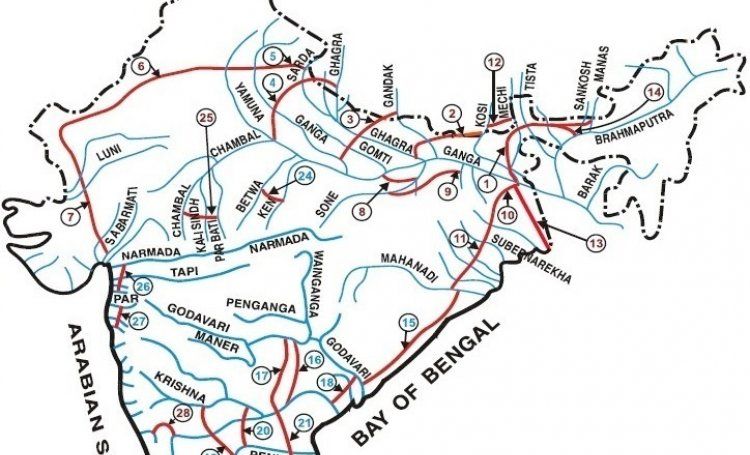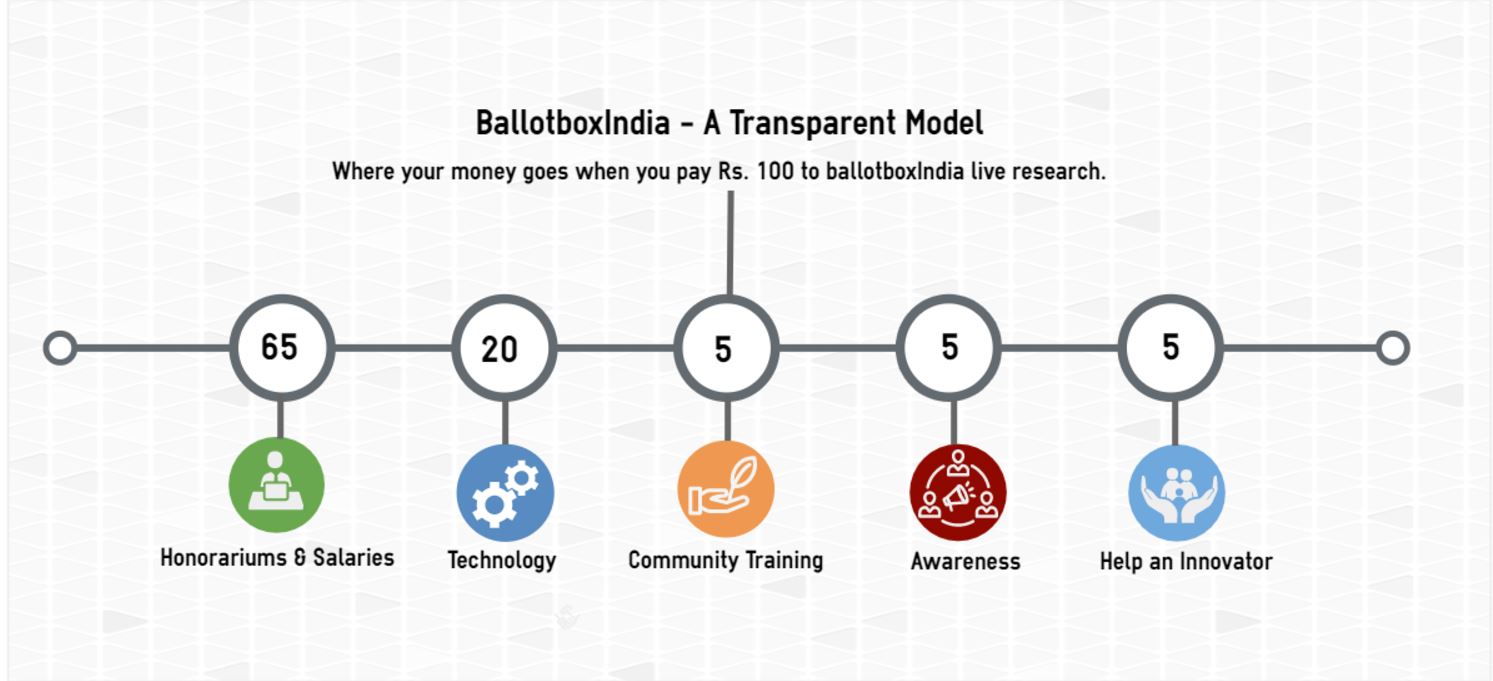What are River Linking Projects in India, and Why they are Important to know and Understand.
The precipitation pattern in India varies dramatically across regions. We simultaneously have floods and water shortage, which is surprising. River linking projects are to counter the water shortage problem by envisaging transfer from the region with surplus water or water basins to the regions that are facing a water crisis. The Indian Rivers Inter-link is a proposed large-scale civil engineering project that aims to link Indian rivers by a network of reservoirs and canals and so to reduce persistent floods in some parts and water shortages in other parts of India.
History or River Linking Projects in India.
The inter-linking of rivers for inland navigation and water management was first proposed by Sir Arthur cotton way back in 19th century (1858) but it was abandoned in favor of railways. This idea reignited when Dr. K.L Rao, a dam designer and former irrigation minister in 1970s proposed that water from the water surplus areas like Brahmaputra and Ganga basin can be diverted to the water deficit areas of central and southern India to counter water shortage.
In August 1980, a National Perspective Plan (NPP) for interlinking of rivers was framed by the Ministry of Water Resources. A National Water Development Agency (NWDA) was set up in July 1980 to carry out further studies.
In 2002, the Hon’ble Supreme Court of India ordered the central government to complete the project in 10 years. Keeping in view the order of the Supreme Court, the Government of India constituted a committee in December 2002 to prepare a detailed report of the project.
The project envisages linking 37 major rivers of India by constructing 30 different link canals forming a network of nearly 3000 storage dams to form gigantic south Asian water grid. The National Perspective Plan, as well as the NWDA studies, has two components of the project viz.,
(a) Himalayan Rivers Development Component and
(b) Peninsular Rivers Development Component (Fig.below). The two can be linked on the Mahanadi.

Image source: National institute of Hydrology
a) The Himalayan River development component

Under Himalayan river development component 14 links have been identified. It envisages the construction of storage reservoirs on the rivers Ganga and the Brahmaputra and their principal tributaries in India, Nepal, and Bhutan along with the interlinking canal systems to transfer the surplus water of Kosi, Gandak and Ghaghra to the west.
Proposed Benefits
The Himalayan River development component shall provide irrigation and generation of hydropower besides providing flood control in Ganga and Brahmaputra basin. A link between Ganga and Yamuna is also proposed to transfer the surplus water to the drought areas of Haryana, Rajasthan, and Gujarat. This component would enhance the inland navigation facility across the country.
The Himalayan component is based on multipurpose storage giving benefits of hydro power and flood control, besides diverting the water to downstream links. NWDA have taken up 11 Himalayan links for study. These include Manas-Sankosh-Tista-Ganga link to transfer Brahmaputra waters to eastern Ganga basin.
Current Status of the projects
Under the Himalayan component, NWDA has already water balance studies at 19 diversions points, and toposheet studies of 16 storage sites and 19 link alignment and prepared feasibility reports of 14 proposed water transfer links. The feasibility report of these links has already been completed.
· Ghaghara–Yamuna link (Feasibility study complete)
· Sarda–Yamuna link (Feasibility study complete)
· Yamuna–Rajasthan link
· Rajasthan–Sabarmati link
· Kosi–Ghaghara link
· Kosi–Mechi link
· Manas–Sankosh–Tista–Ganga link
· Jogighopa–Tista–Farakka link
· Ganga–Damodar–Subernarekha link
· Subernarekha–Mahanadi link
· Farakka–Sunderbans link
· Gandak–Ganga link
· Chunar–Sone Barrage link
· Sone dam–Southern tributaries of Ganga link
b) The Peninsular Rivers development component

The peninsular rivers development component or southern water grid includes 16 water links that are proposed to connect the rivers of south India. It envisages the linking of Mahanadi-Godavari-Krishna-Cauvery and the diversion of a few west flowing river towards the peninsular basin across the western ghats. It would ease the water situation in the peninsular.
The Mahanadi-Godavari link would be 9390 km long and cut along east flowing drainages. Surplus water in this region would be transferred to Cauvery basin and relieve it from occasional shortage. It will help resolve Cauvery water dispute between Karnataka and Tamil Nadu.
Under the peninsular component, the agency has already completed data collection and balance studies of 137 basins/sub-basins and 52 identified diversion points, toposheet studies of 58 identified shortages and 18 toposheet studies of link alignment and prepared pre-feasibility reports of 17 water transfer links. Presently, the work of field surveys and investigations for preparation of feasibility reports of link schemes is on hand. Feasibility reports of these links have already been completed.
The implementation of the inter-basin water transfer link schemes can be taken up in a phased manner depending on the priorities of the Government and availability of funds. But before this, certain other steps, viz., negotiations and agreements amongst the states involved in inter-basin transfer, preparation of Detailed Project Reports (DPRs), techno-economic appraisal of DPRs and investment clearance of the schemes, funding arrangements and fixing of agencies for execution, etc., would be necessary.
In order to expedite the process of arriving at consensus amongst the States, a Group headed by Chairman, Central Water Commission has been formed, so that the work of preparation of Detailed Project Reports could be started. This Group is expected to work independently and on a continuous basis.
This Scheme is divided into four major parts.
1. Interlinking of Mahanadi-Godavari-Krishna-Penner-Cauvery,
2. Interlinking of West Flowing Rivers, North of Bombay and South of Tapi,
3. Inter-linking of Ken with Chambal and
4. Diversion of some water from West Flowing River
Formally launched in 2015, Pattiseema (Polavarum) water lift irrigation scheme is one of the projects envisaged under national river linking project. This project will lift the flood water from the river Godavari and pumps it into the Polavaram right canal that empties into the river Krishna in Vijayawada. This national river linking project that aims to connect as many as 30 rivers including the Himalayan and the peninsular.
The national river linking project is a massive project with and economic budget of Rs.11 Lakh crore($168 billions). On Sept. 16, 2015 the Godavari and Krishna rivers—the second and the fourth longest rivers in the country—were linked through a canal in Andhra Pradesh. The project was completed at a cost of Rs1,300 crore ($196 million). A second scheme, the Ken-Betwa river project—estimated to cost Rs11,676 crore ($1.7 billion)—is currently under development.
National river linking Project once completed can bring several benefits. Few of them are following:
(i) Surplus water from the eastern rivers will be transferred to water deficit areas of central, south and western parts of the country.
(ii) Flood problem, particularly in Bihar and Assam will be solved to great extent.
(iii) 34,000 megawatt (34 million kW) hydroelectricity would be produced. Out of 34000 megawatt, 4000 will come from peninsular component and 30000 will come from Himalayan component. This electricity will be used for irrigation and other purposes.
(iv) The implementation of the programme of inter-basin water transfer is expected to provide additional irrigation benefit of 35 Mha which will be over and above the ultimate irrigation potential of about 140 Mha envisaged from major, medium and minor irrigation projects.
(v) Chronically drought-affected areas will get sufficient water for irrigation, drinking and other purposes.
(vi) As much as 1275.74 billion cubic metre (BCM) water wastefully flowing in rivers originating in the glaciers of the Himalayas will be properly used.
(vii) The project will provide ample opportunities for inland navigation and thus reduce pressure on rail and road transport.
(viii) It will be of great help in resolving inter-state water disputes.
(ix) A minimum flow of water will be ensured in water Deficit Rivers.
The massive project of interlinking rivers would certainly have massive impacts. Few Experts have raised severe concerns over its environmental impact. Following are some concerns over this gigantic project:
River linking projects in India have been seen as a tool to win elections, political parties time these announcements precariously around elections, promising the state under election with the benefits. It's an irony that rivers even after being way more powerful lose this battle since men have voted, these votes then are used to create such massive projects. They do are talked as symbol of technical bravado bringing in huge investments and construction jobs. Use of steel and concrete is advertised to kick start some parameters of "economy". Below are a few major concerns raised.
(i) The project will involve a huge cost of Rs. 5, 60,000 crores or $ 120 billion which amounts to a quarter of the country’s current GDP. A developing country like India can hardly afford such a huge investment in just one project.
(ii) The project will entail the construction of several major dams and lengthy canals cutting across various river basins. This is not an easy task and will require engineering skills of high caliber.
(iii) The project aims at transferring water from water-surplus rivers to water Deficit Rivers. But hydrologists believe that there are hardly any surplus waters anywhere in the country.
(iv) The construction of big dams and long canals will destroy forested areas, fertile soils, and agricultural lands and disturb in ecological balance.
(v) No provision worth the name has been made to resettle the displaced people. An estimate of over 30 million people has been displaced by development projects since Independence.
(vi) Some experts have expressed doubt about the capability of the project. For example, if water available in the deficit Sabarmati basin is only 300 cubic meters per capita (CMPC), then it is difficult to comprehend how a further 1,400 CMPC can be brought from a surplus basin to solve the problem.
(vii) Alternative measures of managing and conserving water resources can prove to be more useful than the proposed project of interlinking the rivers. According to the Central Ground Water Board (CGWB), 37 BCM of groundwater can be recharged locally at only Rs. 24,500 crore. Then what is the validity of investing Rs. 5, 60,000 crores in obtaining a mere 175 BCM from interlinking of rivers.
(viii) Jayanta Bandyopadhyay of Centre for Development and Environment Policy at the Indian Institute of Management (Kolkata) questions the validity of such a project involving high cost and comparatively little returns. According to him, arresting the natural flow of rivers on this gigantic scale could spell “the death knell” of mangroves in the Delta region of West Bengal and Bangladesh and some of the richest fisheries could be lost forever.
Salinity would also make inroads into the region, affecting thousands of hectares of arable land. Also, the link scheme did not envisage carrying water to some of the most deprived sections of the population, including tribals and those living in the highlands.
(ix) Neighboring countries like Bangladesh and Nepal have not been consulted although these countries, along with China, would be affected by the project.
(x) Dr. Bharat Singh, Professor Emeritus, Water Resources Development IIT, Roorkee has simply termed at “A big dream of little logic”. According to him, “there is no convincing argument which can justify taking up the river linking project in its entirety.”
 tag on profile.
tag on profile.




